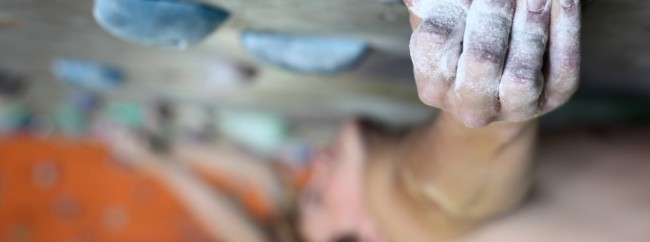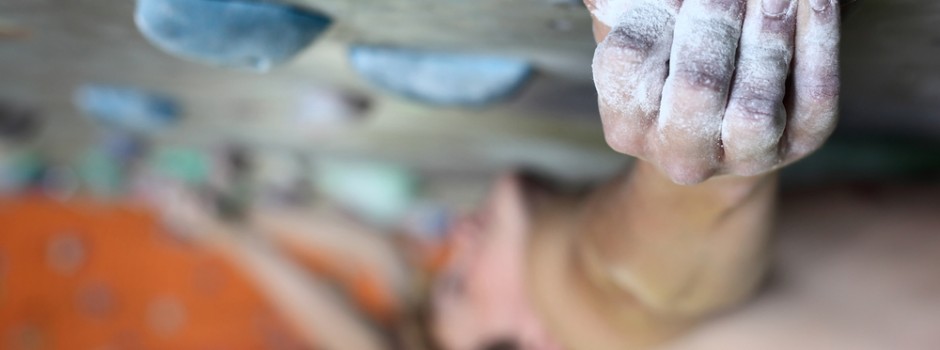
Originally reported at baltimoresun.com
NEW YORK (Reuters Health) – Injuries are extremely rare at indoor climbing walls, a new study of more than a half-million visits to a gym in Germany suggests.
Over a five-year period, 30 injuries occurred, most minor and none fatal, which translates to a rate of 0.02 injuries per 1,000 climbing hours – lower than the rate seen among surfers, skiers and Nordic walkers.
“Rock climbing, especially indoor climbing is a very safe sport,” Dr. Volker Schoffl, an associate professor of orthopedic surgery at the Klinikum Bamberg in Bamberg, Germany, and lead author of the new study, told Reuters Health.
“It’s a sport that we can have all ages of people perform together, kids and grandpas can go do the sport together.”
Schoffl, who is also the team doctor for the German national climbing team, said he hopes the findings, which are published in the journal Wilderness Environmental Medicine, will help dispel the perception of rock climbing as a sport for “adrenaline junkies.”
The researchers collected data on 515,337 visits from 2007 to 2011 at an indoor climbing wall, in which the climber’s age, sex and time spent climbing were recorded electronically.
About two-thirds of the climbers were male, and ages in the entire group ranged from 8 to 80 years old.
During the five-year observation period, there were 22 injuries among male climbers and eight among female climbers. Most commonly the injuries were due to mistakes made in “belaying,” or the use of various techniques to exert friction on climbing ropes to ensure the climber does not fall, or only falls for a short distance.
More than half of the injuries were among intermediate climbers, about 17 percent were among beginners, 20 percent were among experts and 10 percent among professional climbers.
Half of the injuries were moderately severe, 13 were severe but not life-threatening, and two – which included multiple fractures and abdominal injuries – were life-threatening.
“We are safer than badminton and other indoor sports, we are also much safer than contact sports,” Schoffl said in an interview. However, he added, the risk of a fatality is always present.
“You might think that inherently rock climbing is going to be very dangerous, because after all, all it takes is one little slip and you can fall quite a distance,” Dr. Jonathan Chang, a clinical associate professor of orthopedic surgery at the University of Southern California in Los Angeles, told Reuters Health. Chang, a fellow of the American College of Sports Medicine, did not participate in the German study.
“If you pay attention to safety issues, it can be a rather safe type of recreation,” he added. And given liability concerns, Chang added, gyms in the United States with indoor climbing walls are likely to be fairly scrupulous about safety. “You can never say never of course, but as this study is showing when done properly the injury rate is relatively low,” he said.
But outdoor rock climbing is another story as far as safety goes, Chang said. “When you’re dealing with Mother Nature, everything is unpredictable.”
Casper Granado, the climbing wall supervisor at Life Time Fitness in Centennial, Colorado, said the new findings are in line with what he sees on the job.
“The average weekend climber that comes in maybe two, maybe three, days a week, they’re not really the ones that are getting hurt, they might twist an ankle because they landed wrong for bouldering, but that’s very rare,” Granado said. More commonly, he added, advanced climbers may pull tendons because they haven’t warmed up adequately.
Indoor climbing, like swimming, is a great workout for the whole body, according to Granado, and it can also be a powerful confidence booster.
At his gym, Granado said, he and his colleagues check ropes and other climbing gear weekly. And instructors focus on telling students why safety measures are important, rather than just telling them not to do certain things. “We’re making our climbers more knowledgeable, which I think is really good.”
STUDY SOURCE: Wilderness and Environmental Medicine online.

Climbing Business Journal is an independent news outlet dedicated to covering the indoor climbing industry. Here you will find the latest coverage of climbing industry news, gym developments, industry best practices, risk management, climbing competitions, youth coaching and routesetting. Have an article idea? CBJ loves to hear from readers like you!







